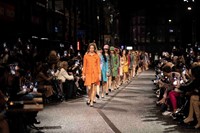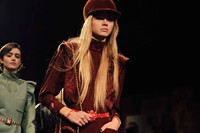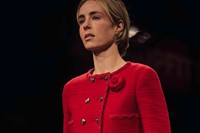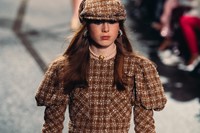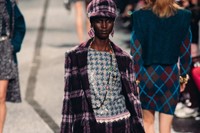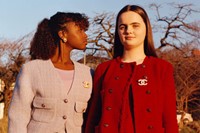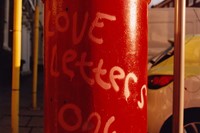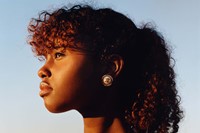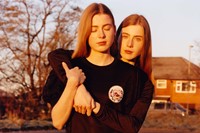When the news was released earlier this year that the house of Chanel would stage its latest Métiers d’art collection not in an exotic locale but on the windswept tarmac streets of Manchester, my immediate thought wasn’t why, but rather how. Not so much how could the show be staged – Chanel have shown in locales as far-flung as Cuba and Dakar, Manchester is hardly a challenge – but how would the show be conceived, connected to Manchester?
And, unlike most, that isn’t because I couldn’t see a link between the polished élan of Chanel and the perceived grit of Manchester – Chanel’s boutique there does a roaring trade, and there are multiple options, different threads of connection that could be tugged at and woven together into a new story. Perhaps it was Gabrielle Chanel’s love of cotton – Manchester was dubbed ‘Cottonopolis’ in the 19th century, central as it was to the country’s trade of the textile, and Chanel famously loved the material (especially, she said, the cheapest variety) because of how well it took dye. She even used it unconventionally for evening dresses in the 1930s. It could also be a connection to Chanel’s love of England, and her English lover the Duke of Westminster who, despite the name, spent time in his family seat of Eaton Hall in Cheshire, about 50 miles from Manchester – Chanel visited the city to source materials. And, of course, both experienced a resurgence in the 1980s – although clubbers weren’t wearing Chanel to the Haçienda.
In truth, it was all of the above that influenced Virginie Viard’s latest collection, and plenty more. Although there wasn’t much cotton to be seen. Chanel’s voyages for its métiers d’art shows have, traditionally, formed not only a backdrop to the collections but have also intrinsically shaped their decorative themes and motifs. Here, a Manc accent was strong. The tweeds were coloured in pop bright shades that could have been pulled from Ben Kelly’s interiors, cut to just-above-the-knee lengths that recalled sixties Dolly Birds – and of course Gabrielle Chanel’s own mid-century work, where those psychedelic-bright colours are another unusual occurrence. “I took my cue from the Coco who brought colour to her tweeds,” Viard said. That was there in knitwear, too, recalling the feverish colour clashes of the football stripes inextricably knotted up with Manchester culture, the whole lot seemingly perfectly engineered to glow against the rain-lashed roads of the city’s Northern Quarter.
Perhaps the pretty much guaranteed inclement weather – it was the north of England in December, after – served as an odd energising force. There seemed impetus to create something to counteract the doom and gloom – it’s grim up north, as they say (FYI I grew up about 15 miles outside of Manchester, so I can write this with assurance). This collection was one of Viard’s poppiest, both in terms of colour and the youthful abbreviated lengths of skirts and culottes. There were nods to both the sixties and the eighties – each heydays of Northern music, albeit the former slightly further towards the coast, courtesy of Merseybeat. “For me, Manchester is the city of music,” Viard wrote. And, as if to prove the point, she pressed Chanel’s own EP of songs to accompany the show – its sleeve was designed by the city’s legendary son Peter Saville, with a graphic based on the cards that determine the intricate workings of a jacquard loom. New Order were in the audience, too. You don’t get that in the rue Cambon.

